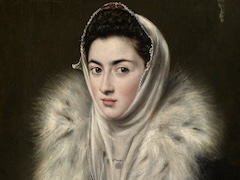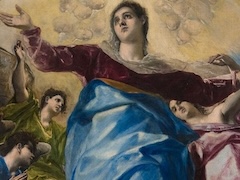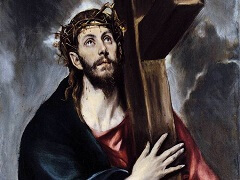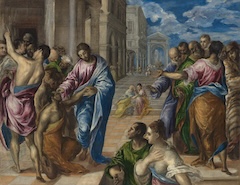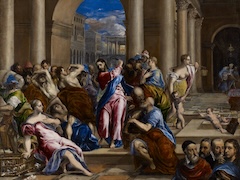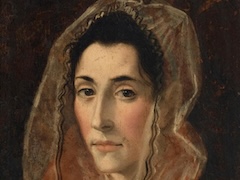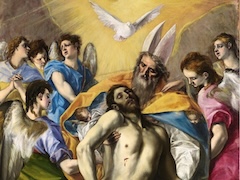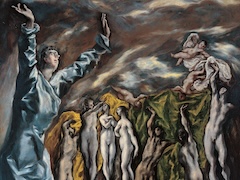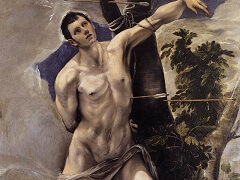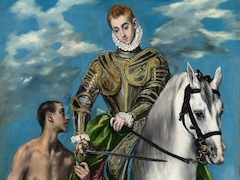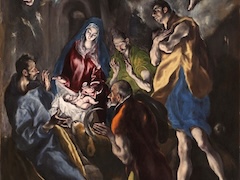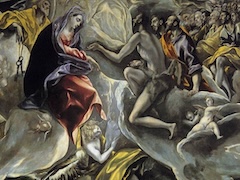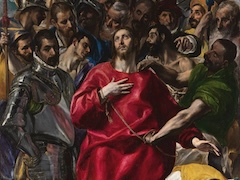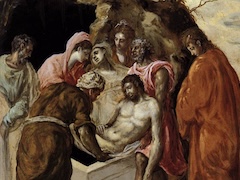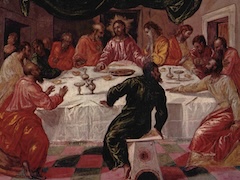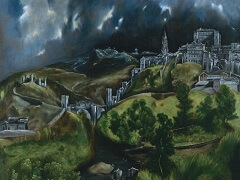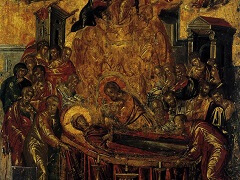Laocoon, 1606-10 by El Greco
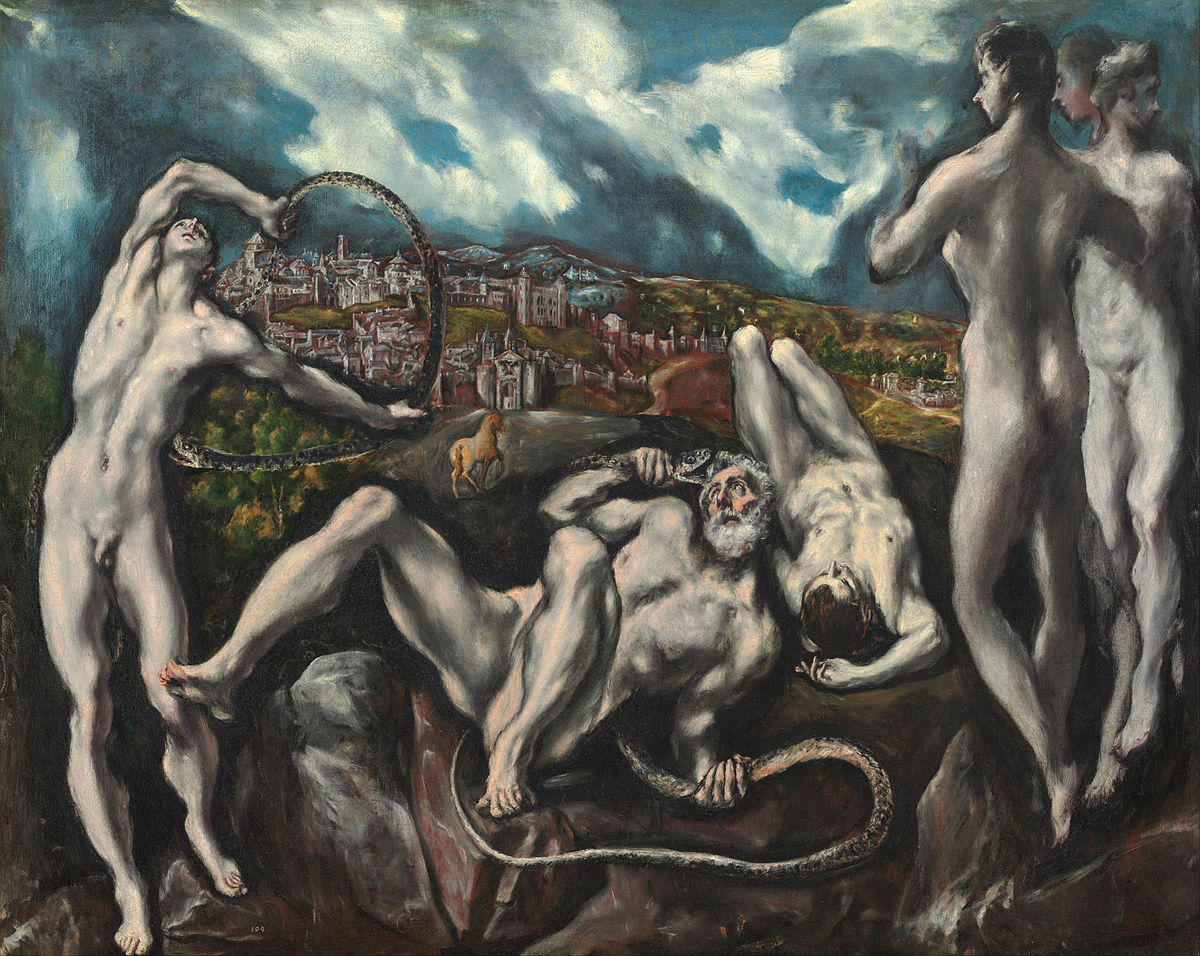
Swift and terrible was the punishment of Laocoon, a priest of Apollo at Troy, and his two sons. According to legend, he had profaned the temple of the god; and additionally, he had incurred the wrath of Athene for having warned the Trojans against the wooden horse. The famous and so influential marble group of late antiquity, unearthed in 1506, portrays the priest and his sons in their futile struggle with the serpents sent to destroy them. But while the sculpture expresses a community of punishment, El Greco, in painting this subject, wished rather to express the isolation, the individual responsibility, of the three victims.
Each of the figures struggles with his destiny in his own isolated way, without regard or pity for the others. We do not know whether the fallen youth is mortally wounded by the serpent, or already dead. And the other son, upright and interrogating the cloud-loaded sky, may have escaped in this version of Greco's the serpent's venom, as he has already escaped the expressively feeble coils. (This liberation, it is true, had been suggested in the oldest version of the legend, by Arctinus of Miletus, and was remembered later by Goethe in his commentary on the Rhodian marble.)
Greco's fallen and struggling Laocoon, more fascinated than terrified, his eyes against the serpent's fangs, seems also to be free from its coils. Will the benevolent witnessing always the witnessing in Greco's art! - of the scene by the two punishing gods, Apollo and Artemis, assure his final triumph ?
The equivocal reigns here. The legs of Apollo are feminine and those of Artemis masculine. The city of Toledo is portrayed here, open to the Trojan horse, to certain doom: did Greco choose to do this out of love, or wrath, or hatred ?
In the subject matter and treatment - elliptical, planes and contours an interrelation of curves and angles everything is centrifugal, separated, capsizing. And yet an ardent unity permeates the whole painting: the two divinities joining heaven and earth; the upright buttressing figures at both sides of the painting; the unity of the brown-gray-greenish color action. . . .

